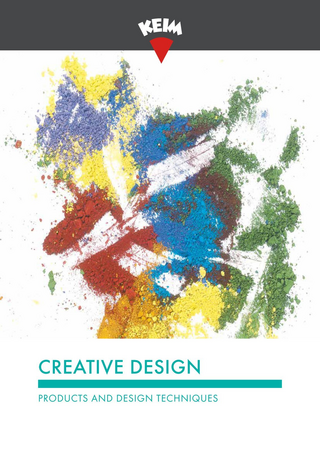Designing walls with colour
Designing walls with colours requires consideration of the context and the fact that colours interact with each other to produce different effects. They can create harmony or contrasts or colour tones full of subtleties.
When designing your wall, pictures, pictures walls or wallpapers can also be used for a new look. This enhances the impact of colour, giving coloured walls alternative effects. Patterns in the same or different colours can make larger rooms gleam in new splendour.
The effect of the colour is also affected by choice of material. The surface of a latex or emulsion paint often looks blunt and dull, particularly in direct light. The same colour in a mineral paint shows great colour depth with a satin-matt gloss.
Before designing your walls with colours, it is useful to find out about colour psychology and the symbolic meaning and effect of colours. Here you can also find more tips and ideas for designing your walls.
Tips for designing your walls
The colours on walls can make rooms with awkward dimensions look better. A long room appears shorter if the walls at each end are painted in strong colours. By contrast, walls painted in a light, cool colour make a room seem large and wide. Strong, warm colour shades on the wall make a room appear smaller and narrower.
Having the right colour on the walls generates different effects. Light colours have an airy effect: a light-coloured ceiling seems light, airy and pleasant. As a result, low ceilings can be made to look higher. Dark colours have a heavy effect. The plinth of a house is usually painted in dark colours for the visual base of the building.
Walls painted in green shades combined with yellow create a spring-like atmosphere in the room. At the same time, subjective noise perception is at a lower level when the colour scheme is light green, whilst red on the other hand makes us think noises are louder.
Entrance areas painted yellow or orange appear cheerful and give the whole room a welcoming effect.
In bedrooms, walls that are coloured blue help us to sleep calmly at night, whilst soft green in offices is inspiring and helps us to concentrate.
Designing outside walls
The same applies to designing outside walls. A house painted in intensive, warm colours (e.g. red) stands out in the street. A house painted in a cool, light colour (light blue, light grey) is less obvious.
A shaded, dreary facade will look much friendlier painted in a light, warm colour. In a living room that faces North and has little direct sunlight, a coat of yellow paint creates a sunnier, more cheerful atmosphere.
Design techniques for walls and facades
In addition to pure colouring, there are also numerous application techniques with which rooms and facades can be designed.
Colourwash technique
Wall designs using colourwashes fascinate by their truly lively character: Whether gently glowing or powerfully vibrating, whether on facades or indoors, whether of subtle simplicity or spectacular finesse – the directness of their effects captures the eye. Silver, copper and golden effects can be created using decorative paints with metallic pigments. Whether on individual walls, entire rooms or external facades the fine shine is accentuated and creates a noble effect. This metallic effect can also be used to emphasise small scale fascinating features.
Calligraphy
Hand lettering has long been a trend. Font types offer endless possibilities when it comes to designing walls. Proportions, typefaces and letter sizes can be used to design walls in a way that they literally speak to the observer. It is creative to use obvious and familiar fonts and cleverly combine them with each other.. In this way, typefaces with a high degree of ornamental and decorative appeal are created in an amazingly simple manner, which can be used to design private and public spaces.
Ornamental painting
In a time of steel and glass architecture, ornamental painting is experiencing a revival. Very much a trend at the moment are ornamental and floral designs, which are applied either by printing, with a stencil or free-hand with a paint brush. The design is situated somewhere between modern, classic, romantic and opulent.
Illusionist paintings
Illusionistic painting has lost none of its amazing fascination. A balustrade with antique columns or a view out onto the Mediterranean, Illusionist painting can transform walls into projection surfaces that inspire, and can give rooms a unique perspective. KEIM supports this very special trend with seminars and publications and a specific product range for artistic designers.

